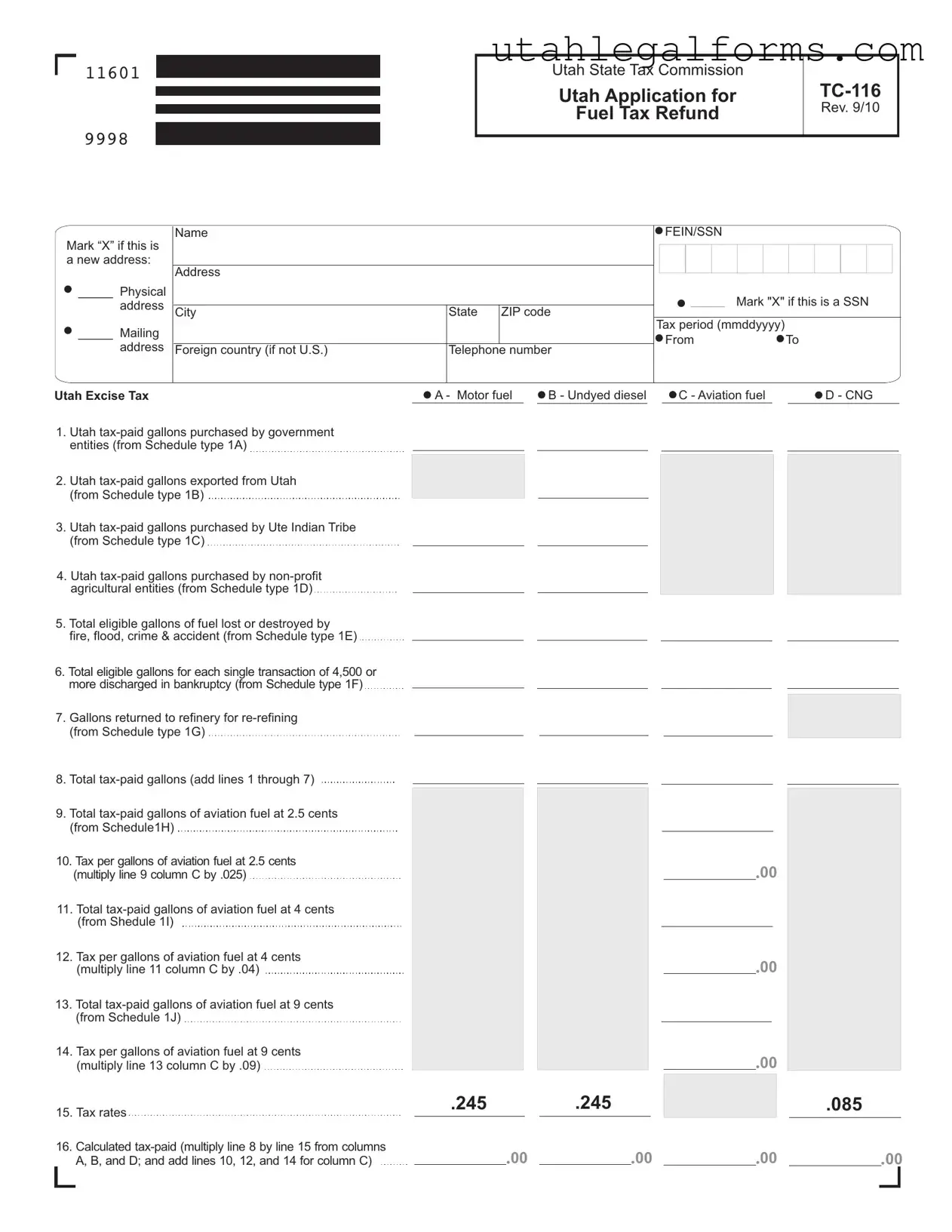-
What is the purpose of the Utah TC-116 form?
The Utah TC-116 form is used to apply for a refund of fuel taxes paid on various types of fuel, including motor fuel, undyed diesel, aviation fuel, and compressed natural gas (CNG). Government entities, non-profit agricultural organizations, and other eligible applicants can use this form to recover taxes paid on fuel that meets specific criteria.
-
Who is eligible to file the TC-116 form?
Eligibility for filing the TC-116 form includes government entities, non-profit agricultural entities, and the Ute Indian Tribe. Additionally, applicants who have experienced losses of fuel due to fire, flood, crime, or accidents may also qualify. Each category has specific requirements outlined in the accompanying schedules.
-
What information is required on the TC-116 form?
The form requires several pieces of information, including the applicant's name, address, telephone number, and Federal Employer Identification Number (FEIN) or Social Security Number (SSN). It also asks for details about the tax-paid gallons of fuel purchased, exported, or lost, as well as calculations for the total tax refund being claimed.
-
How do I calculate the total tax refund on the TC-116 form?
To calculate the total tax refund, add the total tax-paid gallons from all applicable categories, and then apply the respective tax rates. The form provides specific lines for calculating tax amounts for different fuel types, including aviation fuel at varying rates. Finally, sum these amounts to determine the total refund.
-
What are the deadlines for submitting the TC-116 form?
While specific deadlines may vary, it is important to submit the TC-116 form within the timeframe set by the Utah State Tax Commission. Generally, claims for refunds should be filed for the tax period in which the fuel was purchased or used. It is advisable to check the latest guidelines from the Tax Commission for any updates.
-
Can I submit the TC-116 form electronically?
Yes, the Utah State Tax Commission allows for electronic submission of the TC-116 form. Applicants can complete the form online and submit it through the Tax Commission's website. This method can expedite processing times and reduce the likelihood of errors.
-
What supporting documents do I need to include with the TC-116 form?
Applicants must include supporting documentation that substantiates their claim for a refund. This may include invoices, manifests, and schedules that detail the fuel purchases and any losses incurred. Each schedule type corresponds to specific lines on the TC-116 form and must be completed accurately.
-
What happens after I submit the TC-116 form?
After submission, the Utah State Tax Commission will review the application and supporting documents. If everything is in order, the refund will be processed, and the applicant will receive notification regarding the status of their claim. Processing times may vary, so applicants should monitor their submission status.
-
How can I check the status of my TC-116 refund application?
Applicants can check the status of their TC-116 refund application by contacting the Utah State Tax Commission directly. They may provide a tracking number or other identifying information to facilitate the inquiry. Additionally, some online tools may be available for tracking the status of submissions.
-
What should I do if my TC-116 application is denied?
If the TC-116 application is denied, the applicant will receive a notice explaining the reasons for the denial. It is important to review the notice carefully. If the applicant believes the denial was in error, they can appeal the decision or provide additional documentation to support their claim.
